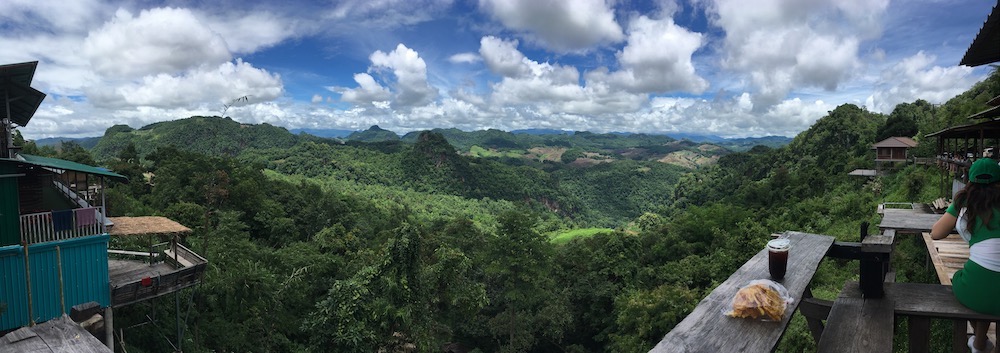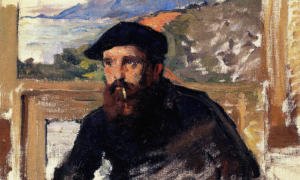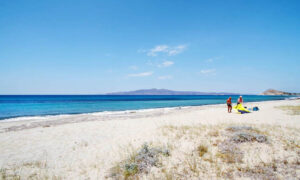(Editor’s note: This is the second of two posts about exploring the Mae Hong Son loop in Thailand by motorcycle. You can see Pt. 1 here.)
The Mae Hong Son loop is a 600-kilometer loop following three or four different roads starting and ending in the city of Chiang Mai. The route is very popular for its stunning views, small roads through mountain villages and its 1,864 curves, a dream for many motorcyclists! On top of this, the roads are almost brand new, so extremely easy to ride, and there is very little traffic on the way.
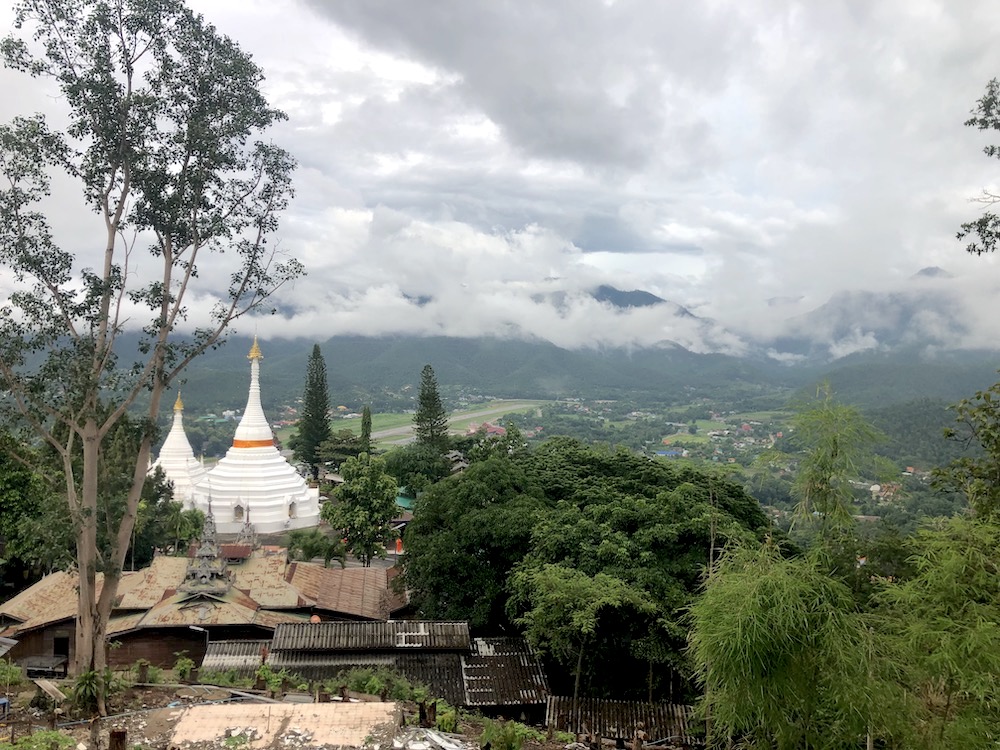
Day 3
Mae Hong Son is a beautiful town nestled in the dramatic hills in the centre of Thailand’s Mae Hong Son province. Although quite small, it offers a very genuine view of a small countryside Thai market town. Complete with food market and the ubiquitous street food market stalls, the town is very relaxed and offers opportunities to walk out into the heavily forested hills, visit surrounding waterfalls and enjoy the views.
In the centre of town is a little lake reflecting the stupas and temples of the Buddhist monastery complex, lit up with sparkling lights at night for beautiful dusk photographs. Another highlight of the town is the Wat Phra That Doi Kung Mu, the temple at the top of the highest hill rising out of the middle of the town.
The steep hike up to the temple is worth it for the views over the city, and a unique place to watch the sun as it sets behind the mountains approaching the border of Myanmar. It is also possible to drive to the top, but it is worth the short hike through the city forest filled with ruins of old temples, calling birds and scurrying lizards.
Another highlight of the area is the Pha Bong hot spring, a public bathing complex that offers Thai massage, cold water swimming and extremely hot spring water (26 degrees!) direct from the thermal reservoirs under the ground.
Day 4
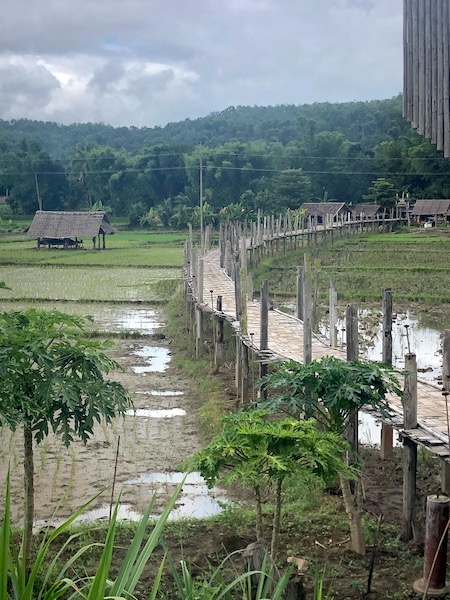
On our fourth day, we started with a quick fruit smoothie breakfast from the local food market, then went on our way. Fortunately, as we were on the edge of the rainy season and due to the general climate in the mountains, most days were fairly cloudy with only a few scattered rain showers – perfect for riding.
Leaving the town of Mae Hong Son, we drove for 20 minutes before taking a brief detour off the main road into a nearby village to see the Su Tong Pae bridge. This is the place to go for travellers looking for the most perfectly typical photos of Southeast Asia.
A traditional bamboo bridge weaves across rice paddies, elevated by a few meters on stilts as it snakes its way a few hundred meters to a hill-top temple on the other side of the paddies. Seeing villagers stooped over in the flooded paddies, wearing traditional clothes and slowly harvesting the young rice plants for transplanting is one of the moments when one really feels that you have left home. That, and you understand there are so many levels of existence, culture and lifestyle layered around our beautiful planet.
The temple was especially beautiful as every building was covered with hundreds or thousands of hanging wooden panels the size of bookmarks. These Ema panels are taken from Japanese buddhism and are covered in written prayers and blessings so they can be granted by their proximity to the holy centre of the temple.
As with the bamboo bridge, there is something otherworldly about such simple spirituality that we all often overlook.
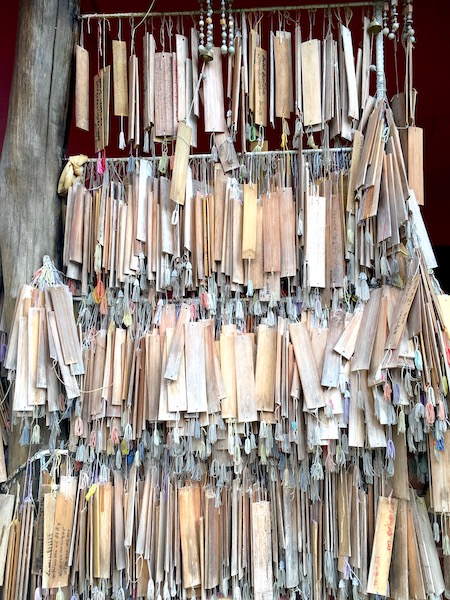
As we continued on from Mae Hong Son, we rode through more rice paddies and terraced agricultural land before taking another turn off of the main road to the village of Ban Jabo. For such a tiny village, the place is highly popular with tours and travellers in the area due to it’s location on the edge of the towering limestone rock formations, affording stunning views out over the countryside.
Fortunately for our rumbling stomachs, the highlight and main event in Ban Jabo is lunch. Boasting one of the best noodle soup restaurants in the area, the Noodle Soup House not only has traditional and spicy Thai noodle soup as it’s specialty, but is also hanging directly on the side of the cliffs. Diners can sit at the edge of the restaurant overlooking the sweeping views, with bare feet swaying in the void beneath them.
As restaurants go, I can definitely say that I have never been anywhere like it. For views and food, I highly recommend it! (See featured photo above.)
After lunch, and before reaching our next destination, we also stopped at the Nam Lod caves outside of Pang Mapha. Cave tours are not for everyone, but we had a great time being led through the dark caves by a local guide from the village. Massive stone formations and structures were lit and pointed out to us in the archaic light of an old gas lamp. Filled with an amazing variety of textures and forms, the pillars, stalactites and stalagmites were incredible – some of the most impressive cave formations that I have seen.
After heading back on the road (including a brief spell hiding under a bamboo shelter during an absolutely torrential rainstorm), we climbed and coasted over the last high peaks and ridges of the northern hills before descending to the valley of Pai.
Day 5
Over recent years, Pai has been transformed from a small market town alongside its eponymous river into a hippy backpacker centre in northern Thailand. The town and surrounding river valley is ringed by gorgeously verdant hills, and is now host to many hostels, restaurants and bars for the mostly younger
backpacking crowd.
It is very popular with travellers looking for cheap accommodation and a relaxing environment in which to let time drift by (punctuated by a tour to nearby waterfalls or tubing down the river), although the amount of backpackers there can be a little too much sometimes. Despite that, the people there are friendly and accommodating and it is easy to escape the touristy centre when you have a scooter or motorcycle to explore the surrounding areas.
Our time in Pai involved relaxing with friends by the riverside (many of the hostels have bungalows right on the river bank), treating ourselves to iced coffees in one of the many coffeeshops, and eating some delicious local food. A great place for a view over the valley is the giant white Buddha statue on the south side of town, overlooking the town and valley.
One of the highlights in the town during the tourist season is the nightly “walking street food market” in which nearly a kilometer of the main street is filled with small street food carts. They offer a surprisingly international selection of food, from Thai traditional to sushi to lasagne. It was a great way to wander around at night, filling up on many small snacks and searching through locally-produced crafts and clothes.

Day 6
On the last day of our trip, after a breakfast of fresh fruits and iced Thai coffee, we chose to visit some of the popular sights in the south of Pai valley as we headed back towards Chiang Mai. After enjoying the quiet traditionalism of the bamboo bridge and rice paddies outside of Mae Hong Son, we decided to visit a similar sight outside of Pai.
The Ko Ku So bridge in the village of Ban Phaem Bok was a little out of the way down some smaller side roads, but took us up into the foothills to a small village with a winding 900-meter bridge stilting across rice paddies and bamboo huts. The bridge leads to a small monastic retreat and is rarely visited, so the walk through the fields and forest were extremely quiet and peaceful, again reminding us we were stepping into an older and simpler world.
Following the main road leading out of Pai, it is also possible to make a stop for a wander around Pai Canyon. This is quite a special area as arching ridges of sandstone and limestone rocks rise out of the hills in the exit of the valley, more reminiscent of rock formations in the Arizona or southern Spain than anything else we saw in Thailand.
The heavy rainy season in the mountains have carved the rock in sweeping gullies and cliffs from which one can get great views of the mountains to the west and north. Although it is not quite the Grand Canyon, it was great to stretch our legs and walk around the cresting rock trails that follow the ridges of the canyon over the trees and vertical drops below.
For us, it was a nice way to end our journey with a look back at the countryside through which we had just travelled and an opportunity to reflect on the adventures, beauty and excitement we had experienced over the week.
After hiking the dusty canyon trail back to the moped, we followed the main road the 2-to-3 hours back to Chiang Mai, completing the loop. Tired, hot and dusty, we were nevertheless thrilled with our adventure and it has remained a highlight of our Thailand trip to everyone we have spoken with since.
Feeling the cool forest and mountain breezes brush past you as your coast down a winding road from ridges to valleys, seeing untouched natural views, impressively large jungle trees and traditional agriculture was a wonderful experience that we will never forget. As an independent way to travel and explore this amazing part of the world, I would highly recommend it to everyone.
The ease and safety that we felt on the road, combined with the friendliness and helpfulness of the local population made this one of my favourite and most inspiring travel experiences so far.
So if you’re in northern Thailand, definitely grab your helmet and backpack and give the Mae Hong Son loop a go!
Thom Harding was born and raised in the UK and USA, sharing his time between Bath and Boston. Upon completing his studies in Art History and Painting in Florence, Thom travelled around Mexico and India before moving to New Mexico to start his career as a Primary school teacher.
After completing his MA in Education, he now lives and works in Vienna, Austria and enjoys spending his free time hiking, reading, travelling and exploring around Europe.
See more of Thom’s work here in the Dispatches archive.
You can read more about Vienna here in the Dispatches archives.


